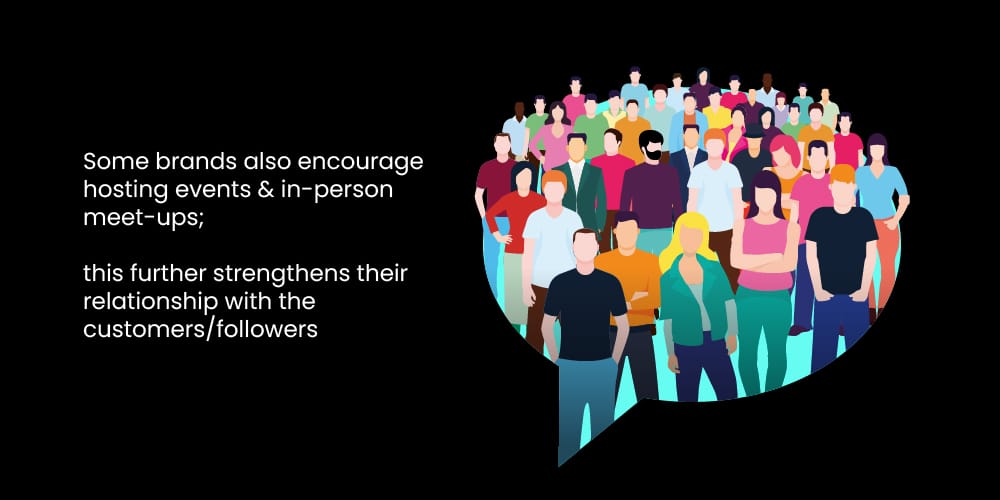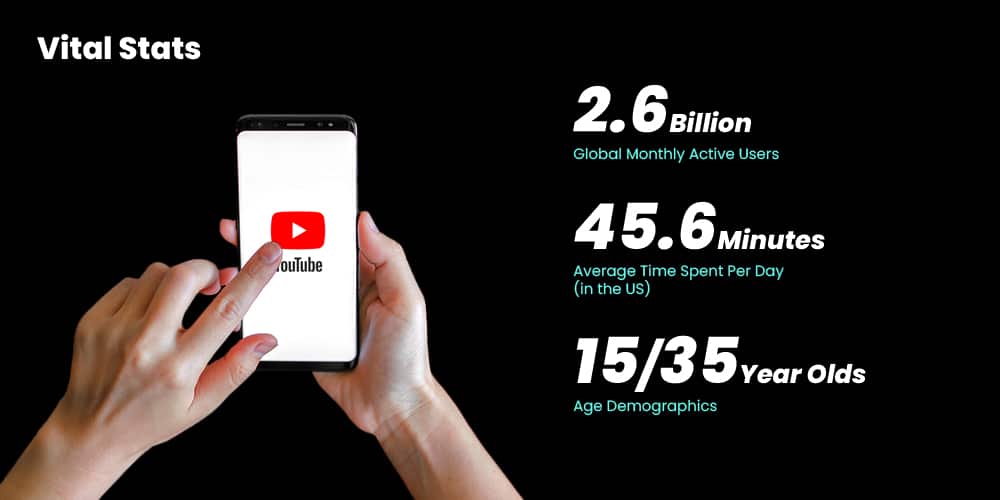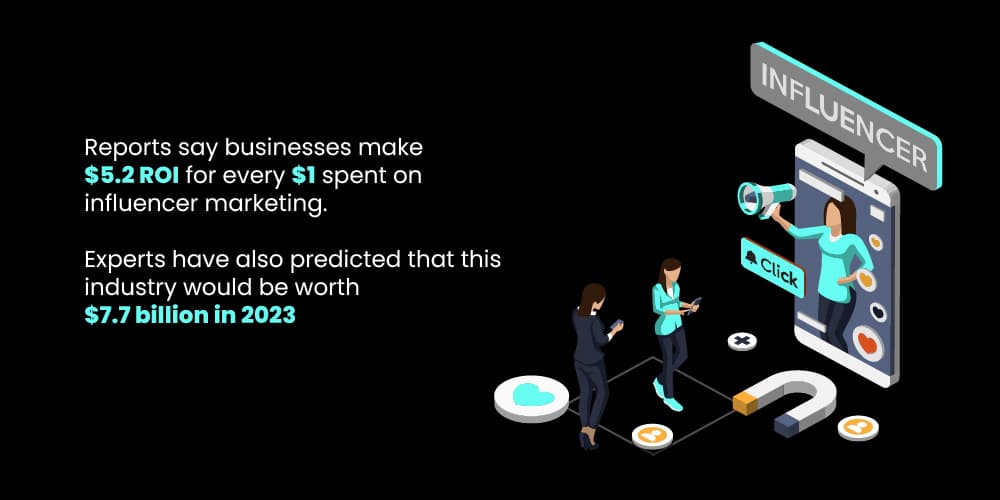Quick Social Media Marketing Guide for Holiday Campaigns
Not even a day goes by when you don’t casually open your Instagram and quickly sweep through a few posts in your feed. You can be a connoisseur of boots, collect hats of all seasons, or have other interests. But you must have noticed that these brands you so passionately admire dole out irresistible baits on every given opportunity and make you hop on their social media channels several times a day. You don’t necessarily make a purchase; however, you respond to their posts – positively and frequently. See what you are doing there – engaging with your favorite brand through their social media content and becoming a part of their potential buyer/ faithful follower community. Also, do you understand what they are doing here – hmmm, Social Media Marketing!
That’s right! It is simple to identify the marketing pattern followed these days. Why so? Two reasons primarily. First, numerous companies across sizes and industries are trying their luck with developing and practicing various social media marketing strategies. Today’s online market is taut and abuzz with promotional content creatively carved to garner people’s attention. Second, many of these companies need an organized social media marketing strategy in store. They only throw their shots at catching up with every trend, don’t produce cohesive content, and in turn end up hampering their social media growth.
Don’t worry; we bring you a social media marketing guide to plan your marketing strategies effectively and achieve your business goals.
Also, are we forgetting that the holiday season is reaching its climax? It’s the “ultimate time” to put your holiday marketing campaigns at full throttle and pull up the social media tactics to their best.
With that, let’s dive in!
But, How Does Social Media Marketing Help You?
Well, social media marketing is all about using social media channels to advertise/ promote products, services, or brands. Content creation & community management, advertising & paid media, sponsorships, and influencer marketing – are its most commonly practiced types.

Additionally, it helps to:
- Build up & increase brand awareness
- Formulate tight-knit communities (and over time, whom you can ask to subscribe to your newsletters, direct them to your website, Etc.)
- Sell your products & services.
- Assess Brand Impact & Sentiment (will help enhance brand image, voice & messaging at later stages)
- Provide Customer Service Support through WhatsApp, Twitter, and Instagram (responding to customers’ queries & complaints in the DMs and comment sections)
- Advertise to your target audience; you can run (YouTube & Instagram) video ads, (LinkedIn) carousel ads, promoted tweets, Etc.
- Track brand performance (via meaningful metrics)
What Do You Call a Social Media Marketing Strategy?
It is a document with an overall layout of your social media goals and the actions you will take to accomplish them. Plus, it should enclose the number/type of metrics you will employ to measure your progress.
Any social media strategy should consider the following:
- Number of existing and planned social media accounts
- Content formats that you have been using for a long time or new molds you wish to experiment with
- Narrow down and segregate the goals specific to each platform
- Remember, the goals should always be an elemental derivative of the larger digital marketing strategy
- Outline the roles and responsibilities of all team members
- Ideate a lucid mechanism for the team’s coordination, punctual reporting, and a frictionless flow of dependencies with one another
5 Easy Steps to Construct a Social Media Marketing Strategy
1) Your Social Media Goals Should Comply with Your Business Objectives
First, SMART Goals Make you Win on Social Media
Specific, Measurable, Attainable, Relevant & Time-Bound should be the nature of your social media marketing goals, whether it is during the Holiday Season or any given period of the year. However, for Holiday sales, start working on your goals in advance and define them more succinctly.
Two factors that help you succeed in the SMART framework are:
- You have clear expectations of what you are doing and are well-prepared to tackle any complications that come your way
- You can track your progress at any point in the journey
“Growing Brand Awareness” is an ideal goal when launching a new product or service during the Holiday Season. Another goal would be “Managing Brand Reputation” and “Increasing Website Traffic” (with a critical focus on network referrals & email-sign ups). Ensure you report the social media metrics daily, weekly, or monthly. All your goals must have a deadline assigned to them.
“Improving Community Management,” “Generating Leads,” and “Boosting Conversions” will impact your ROI directly. “Delivering Customer Service” (i.e., setting up customer support on social channels, collecting data from customer testimonials, and ongoing customer satisfaction surveys) can also be another essential goal for you to achieve.
Meaningful Metrics Add Sense to the Social Media Strategy
i) Awareness Metrics
– Reach
It is the number of people (made of followers & non-followers) who see your content (reach of every post, story, or video).
[Note: Don’t worry if it shows that you have many non-followers; it is probably suggesting that your content is shared well, complying with the algorithms, or both)
– Impressions
The number of times people looked up your content; could be higher than your reach, as an individual may choose to read or watch your content more than once.
– Audience Growth Rate
It is the new (unique) followers that your brand has acquired on a social media platform over a particular period. For each social platform, divide the net new followers by the total audience you already have. Then multiply the outcome by 100. You get the Growth Rate Percentage quickly.
ii) Engagement Metrics
– Engagement Rate
For each platform, calculate the total number of likes, comments, and shares, a piece of content gained in a set period, and divide it by the audience you have. Then multiply what you get by 100, and you will have the Average Engagement Rate Percentage of each post.
– Amplification Rate
For a particular post, divide the number of shares it earned by the number of followers you had in that period. Multiply the result by 100; you will obtain the Amplification Rate Percentage for your post.
– Virality Rate
Divide a post’s total shares by the impressions it made. Then multiply what you get by 100; you get the Virality Rate Percentage.
Quite helpful while you sit to analyze whether catching up with the social media trends has borne any true value or just wasted your hours. And how you can prevent or compensate for your lost efforts if it’s the latter.
iii) Video Metrics
– Video Views
Each platform has its own rules and regulations when defining what counts as a “view.” But it is an instantaneous indicator of how many people watched at least the beginning of the video.

– Video Completion Rate
How many people went to the end of the videos and watched it entirely; this affirms that you are creating quality content and have connected with your audience and answered their needs. This metric is beneficial for measuring the success rate of “How-To Videos,” “Product Launch Promotional Videos,” “Holiday Offers, Deals & Discounts,” and other informative content.
iv) Customer Experience & Service Metrics
– Customer Satisfaction (CSAT Score)
Embodied by the traditional question that we, as product or service providers, ask our customers at the end of each transaction or purchase – “How do you like to rate your overall level of satisfaction?”
To get a CSAT percentage – add up all the scores, divide that sum by the number of respondents and multiply by 100. It also informs you how effective the implementation of AI-powered chatbots has been for your business.
– Net Promoter Score (NPS)
It measures customer loyalty and predicts future relationships with them. The foundational question of NPS is, “How likely are you to recommend our company/product/service to a friend or colleague?”
Based on the scores obtained on a scale of 0 to 10, we group the customers into three categories:
- Detractors (within the 0-6 score range)
- Passives (7-8)
- Promoters (9-10)
For calculating NPS, obtain the difference between the number of promoters and detractors. Divide it by the total number of respondents, and multiply by 100. It may help forecast potential future sales and aid inventory management during the hustle and bustle of the holiday season.
v) ROI Metrics
– Click Through Rate (CTR)
It indicates how often your audience clicks a link in your post to access additional content. The link could be to a blog post or your online store. How your social media posts (either by organic content or paid ads) convey your offerings – is what CTR tells you about broadly.
To calculate CTR as a percentage, divide the total clicks on a post by the impressions it made and multiply by 100.
– Conversion Rate
Can your social content fetch a download, subscription, or sale? Can you bring your customers to the end of the funnel? Conversion Rates let you know all about that. UTM (Urchin Tracking Module) parameters are crucial for “tracking conversions across traffic sources and publishing media.”
Calculate the Conversion Rate Percentage by dividing the number of conversions by the total clicks on a post and multiplying the outcome by 100.
– Cost Per Click (CPC)
The cost you pay for every unique click on a social ad. This metric comes into play when we analyze the Lifetime Value of Customers and consider their Average Order Value.
You don’t need to calculate the CPC for each ad; the specific social media network will provide it as part of its analytics data. If you have a higher lifetime value of customers and they show optimum conversions, you can spend more on ads to get visitors to stop by your websites.
– Cost Per Thousand Impressions (CPM)
The cost you pay for every thousand impressions of your social media ad. Again, no need to calculate it. The social network’s analytics data provides a neat presentation of CPMs for all ad campaigns you run.
vi) Share of Voice & Sentiment Metrics
– Social Share of Voice (SSoV)
It tells you where you stand in comparison to your competitors. How many people are talking about your brand/product/service in the market? This social conversation includes direct (tagged) and indirect (untagged) mentions. Best termed as Competitive Analysis, this evaluation process churns out a valuable metric.
Add the total number of mentions you earn as a brand across all social channels. Do the same for your competitors. To calculate the SSoV percentage, divide your brand mentions by the industry total (i.e., the sum of your brand and competitors’ mentions). Then multiply the result by 100.

– Social Sentiment
It enlightens you about the positive or negative feelings that drive your brand’s social conversation online. The general attitude of people to your brand and how they perceive it; all fall under the umbrella of social sentiment.
2) Study Your Target Audience – Know Them All!
How Old Are They?
Age is vital when we discuss refining social media marketing strategies and targeting audiences with ads on a budget. There is well-researched data surrounding which social media platforms millennials hang around or what Gen Z prefers the most. Did TikTok come to your mind wrt Gen Z? You guessed it right!
Where Do They Belong?
Region-wise targeting requires your strategy to consider the precise locations of people you want to reach. Most practical for brick-and-mortar businesses, as they can easily wire their ads around populations living in the same city as their physical stores are present.
What is their Average Income?
Both B2B and B2C businesses can profit from knowing the average income of their potential customers. They can then pitch their sale offers, holiday deals, and other services accordingly.
What Do They Do?
For example, the Trihard Swim Care company would be more interested in shooting their ads or newsletters to people who are professional swimmers than others. There is a high possibility of them buying “swim care products” frequently. Similarly, Mail Chimp, an email marketing firm, would only pursue B2B and B2C companies that may need digital marketing services. Thus, knowing the typical job or industry of potential leads/customers helps cut your expenses on ads.
What Are Their Interests?
“A millennial in her thirties who loves cooking as a pastime hobby,” wouldn’t that be great information for a cookware-selling company? Targeting your visitors who showed interest in your social media posts or clicked on your ads is a great way to acquire leads and make them convert.
3) Who are Your Competitors in the Market?
Competitive Analysis, Know Who You are Up Against?
While performing one, you need to take care of the following:
- Identify your competitors on social media
- Understand which platforms they hold a firm footing; you can speculate on others where they don’t have much of a presence and venture to set off there initially
- Keeping a close tab on their posts, observing the content formats
- Evaluate their strategies; are they working well or enduring and about to crash?
- Obtain benchmark figures so that you can shape your goals with some authentic data at hand
- What are the social threats to your business?
- Are there any gaps in your social media marketing strategy? How can you resolve them? What steps are your competitors taking to tackle similar challenges?
- Recognizing probable pain points of the customers
- Competitor Keywords can make all the difference in the sales game. So, keep an eye out for them!
Social Media Listening is One Necessary Step!
We just learned about the Social Share of Voice and Sentiment Metrics above. Yes, both these form the basis for Social Listening.
Let us define it in more detail for you. Social Listening examines social media channels and considers mentions for your brand, competitor brands, and industry-related keywords. It lets you:
- Better understand the demands of your customers
- Set up a product development strategy, taking into account customer expectations and resolutions that they have offered or wanted
- Manage PR mishaps before it gets worse or unmanageable
- Track competing brands, know about the trending content, and perform sentiment analysis on topics related to your business
- Improve Customer Service Support
- Market products/services more effectively
- Make data-driven decisions that leave a positive impact on your overall business goals
4) Audit Social Media Channels & Prepare Reports
Trial and Error Method – What’s Working & What’s not?
One has to remain vigilant and constantly monitor the metrics when the social media marketing strategy is in its implementation and execution stages.

We suggest optimizing your content formats, post-related topics, and ads as per competitor analysis, latest trends, social media platform compatibility, and customer needs.
Engagement Rate
Does the content that you produce resonate with your audience? How would you know? You can use the below-mentioned metrics to get your answers. They include,
- Reactions, likes, comments, shares, saves & direct messages
- Mentions (tagged or untagged), click-throughs, on-post clicks & profile visits
- Replies, quote tweets, retweets, re-grams & link clicks
- Calls, texts, sticker taps (on Instagram Stories), and emails
- Use of branded & modeled hashtags and “get directions” (available for Instagram accounts only)
Moreover, you can put some math into your Social Media Audit Reports and fetch data for presentation. As we know, colorful graphics always enable better interpretation of any situation. Employ the following engagement rate formulas to derive the required data:
i) Engagement Rate by Reach (ERR)
It is the most common method to calculate engagement with social media content. ERR reflects the percentage of people interacting with your posts after encountering them.
To calculate ERR, divide the number of engagements per post by the reach per post and multiply by 100.
ii) Engagement Rate by Posts (ER Post)
A little different from ERR, it highlights the rate at which your followers choose to engage with your posts. It is apt for specific social media posts that have taken plenty of time to produce, such as videos & reels.
To calculate ER Post, divide the total engagements received on a post by the number of followers you have and multiply it by 100.
iii) Engagement Rate by Impressions (ER Impressions)
Another base audience metric that helps you track how often your content appears on screen (in the case of both followers and non-followers). It is hugely advantageous for paid content, as it lets you measure its success.
To calculate ER Impressions, divide the total engagements you got on a post by the total impressions made by it and then multiply by 100.
iv) Daily Engagement Rate (Daily ER)
How often are your followers engaging with your account daily? Best suited for long-term content analysis reports.
To calculate Daily ER, divide the daily engagements by the number of followers you have and multiply by 100. With this, you can even measure the engagement rate of daily comments for any social channel.
[Note: A decent amount of error can occur in this metric. For example, it doesn’t hold these scenarios separately: if one follower interacts with your post ten times v/s ten distinct followers interacting once.]
v) Engagement Rate by Views (ER Views)
Videos are the primary verticals for many e-commerce businesses. Social media marketers, without fail, study how many people engage with a video post after watching it.
To calculate ER Views, divide the engagements received on a video post by the total views it got and multiply by 100.
[Note: In this case, too, we face an error with repeat or non-unique views. A single user can watch a video multiple times but may only engage with it a few times.]
vi) Cost per Engagement (CPE)
Best fitted for assessing engagement rates for posts that you sponsored for influencers. You ought to know how your investment is paying off.

Most social media platforms will offer this calculation for you. Still, to calculate CPE, divide the net amount spent by the total engagements received, including all posts & ads.
[Note: Always confirm what type of interactions count as engagements.]
Identify Your Most Profitable Partners
In November 2021, Statista surveyed top B2B and B2C marketers in the United States, United Kingdom, Australia, Canada, Germany, France, and Japan. According to them, the top social media platforms that yielded the highest ROI that year were Facebook, Instagram, LinkedIn, TikTok, YouTube, and Pinterest. Moreover, 21% of respondents claimed that Facebook made them hit the jackpot in sales.
As you draft your social media marketing strategies, figure out the best compatible platforms for your business and where you can find your target audience in abundance. Start with the platforms you are most confident in and gradually proceed to the others.
What Social Networks Will Work Best for You? Look it Up
Here are some pointers to guide you along the way:
- How do your potential customers prefer to use a particular social media platform?
- How many hours do they spend there?
- What is their dominant mode of interaction with the posts?
- Types of content most favored by your target audience, find them out!
Look for Impostor Accounts
During the audit process, you may find fake accounts using your business name or the appellation of your products.

A few may also try to deceive your customers. Report them immediately and caution your following about these fraudulent accounts.
Get the “Verified” Tick on Your Profile
Try to attain the blue checkmark badges on your accounts/profiles to let your customers know they are following the “authentic you.” It will boost your credibility and facilitate trust between you and your customers. You may apply/request the badge on Instagram, LinkedIn, TikTok, and Twitter.
5) Set an Account & Improve your Social Media Profile
- Get down to designing your social media page.
- Try something new and unique, yet simple and easy-going.
- You can devise a brand visual avatar and maintain it in all your posts. It can be a cartoon figure, symbol, or anything fresh you wish to bring to the table
- Choose a default color tone, font style, and filter for your posts
Content Creation Follows Next! Here’s a step-wise breakdown of it
1) Plan a Social Media Calendar
- Maintain a regular posting schedule
- Explore what particular hours of the day your target audience is most likely to engage; (this may vary depending on the social media platforms)
- How about building a social media repository?
- Capitalize on holiday and festivity themes, Google calendar events, and trending topics
- You can employ social media management software, such as “Sprout Social (best overall), Hootsuite (best for analytics), Zoho (best all-in-one tool), MeetEdgar (best for automation), Loomly (best for large teams & collaboration), Social Pilot (best for small teams), Etc.”
2) Think about Creative Content Formats
It may seem like an uphill task, but here are some hacks to give you a head-start:

- Decide on a balanced mix of content formats
- Take inspiration from your favorite brands on social media
- Learn from those who already nailed their social media marketing strategy; listen to the success stories of marketers
- Revisit award-winning campaigns & popular accounts related to your niche
- Call your followers via posts and stories on social media and extract what they want to see or read
3) Write Compelling Content
- Which content types perform better on what social media platforms?
- Informative, entertaining, or purely promotional? See what works
- Include visually enriching images and catchy captions, vibrant carousels, quotes, videos (long & short-forms), reels, quote mentions, Etc., in your posts
- Microblogging (on Facebook & Twitter); sharing social news
- User-generated content can ease the burden; plus, it will delight your customers as they feel reciprocated by the brand
- Quality over Quantity? Yes, always! But don’t mull over a single post for hours; take it easy.
4) Keep Track of How Your Daily Postings Perform
- Discover tips & tricks to perform better; educate yourself
- Remain up to date with the logarithmic changes on social media platforms and the introduction of new (e-commerce) features that you can use to your benefit
- Re-evaluate your strategy; check whether or not you meet your goals within the pre-set time frames
- If you are not content with the results, identify the areas you need to improve; patch up/renovate your old strategies
- Practice A/B testing methods
It may take some time to get acquainted with the Why’s, What’s, and How’s of social media marketing, but (a little) patience and (a whole lot of) consistency will surely win you great results.
With that, we will wrap it up for today!
Follow us daily to learn more about social media marketing strategies and how to stand out from your competition.
See you next time!
